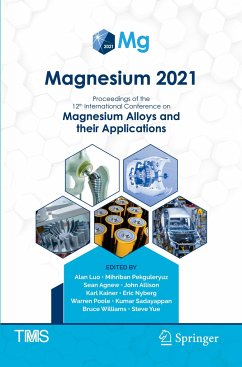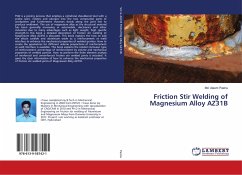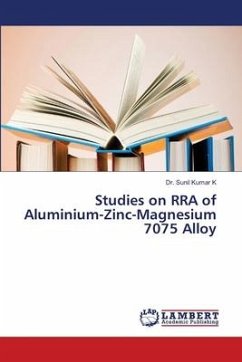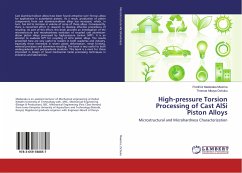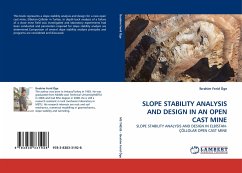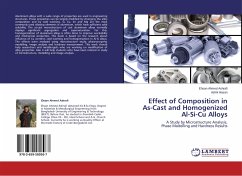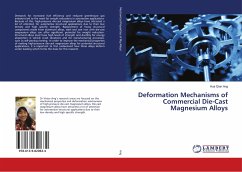
Deformation Mechanisms of Commercial Die-Cast Magnesium Alloys
Versandkostenfrei!
Versandfertig in 6-10 Tagen
46,99 €
inkl. MwSt.

PAYBACK Punkte
23 °P sammeln!
Demands for increased fuel efficiency and reduced greenhouse gas emissions led to the need for weight reductions in automotive applications. Because of this, high-pressure die-cast magnesium alloys have attracted a lot of attention for automotive structural applications due to their low density and high specific strength. Replacement of heavy structural components made from aluminum alloys, steel and cast iron with die-cast magnesium alloys can offer significant potential for weight reduction. Structural alloys must have high levels of strength and ductility for energy absorption in vehicle cr...
Demands for increased fuel efficiency and reduced greenhouse gas emissions led to the need for weight reductions in automotive applications. Because of this, high-pressure die-cast magnesium alloys have attracted a lot of attention for automotive structural applications due to their low density and high specific strength. Replacement of heavy structural components made from aluminum alloys, steel and cast iron with die-cast magnesium alloys can offer significant potential for weight reduction. Structural alloys must have high levels of strength and ductility for energy absorption in vehicle crash situations and for manufacturing processes, such as self-piecing riveting. In order to improve the mechanical properties of existing high-pressure die-cast magnesium alloys for potential structural applications, it is important to first understand how these alloys deform under loading which forms the basis for this research.



